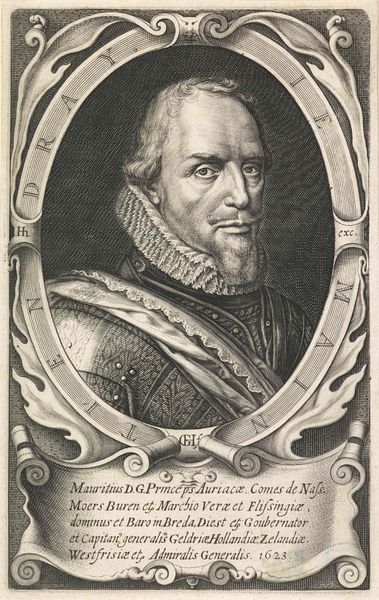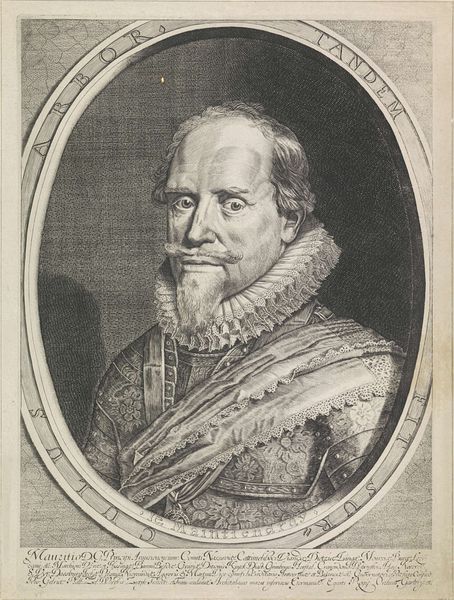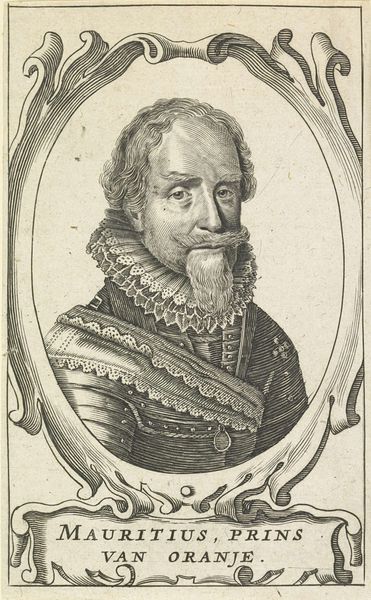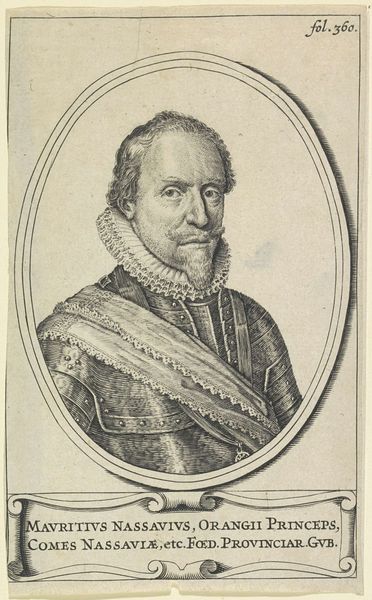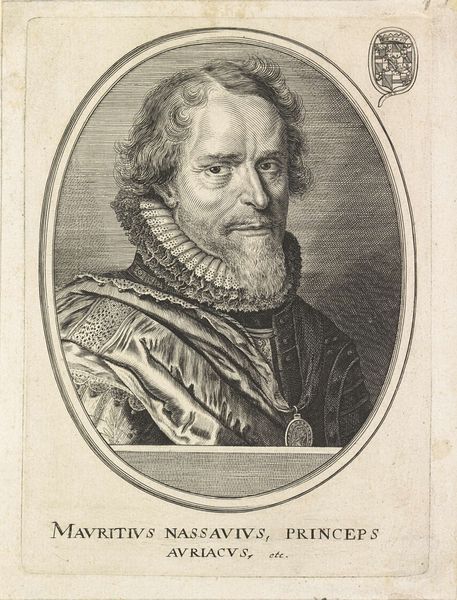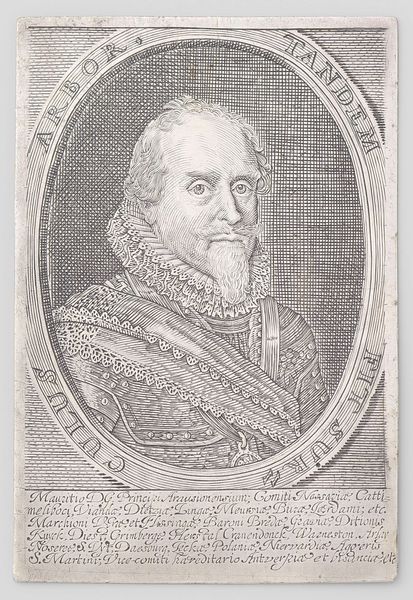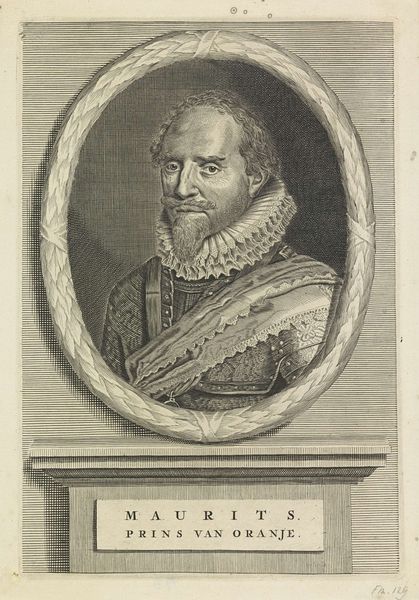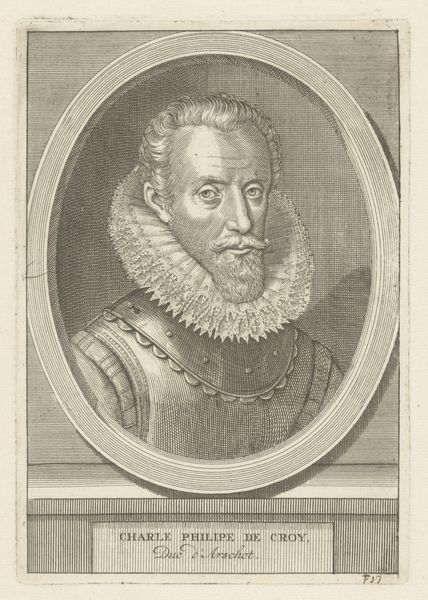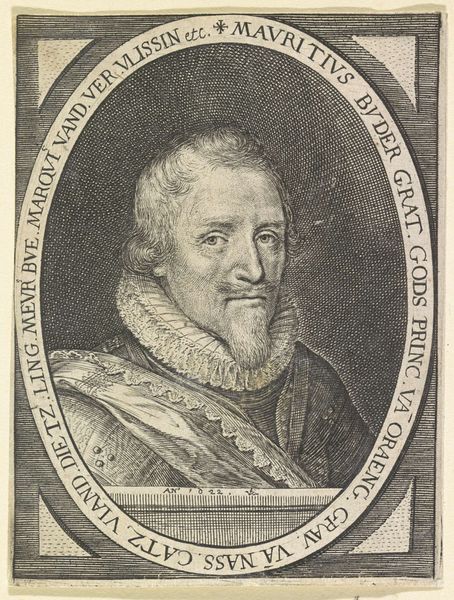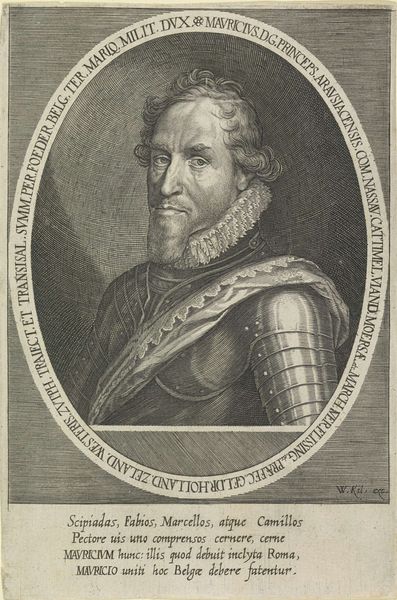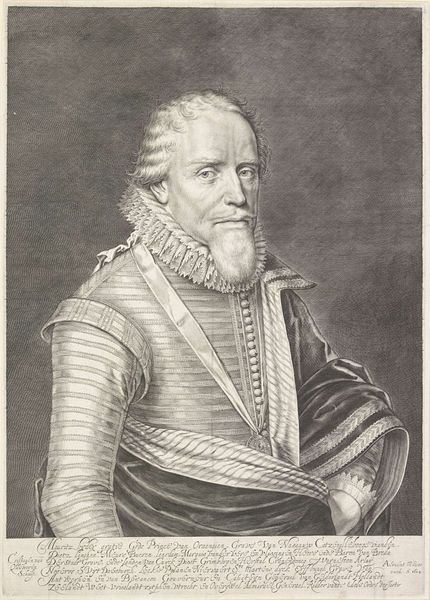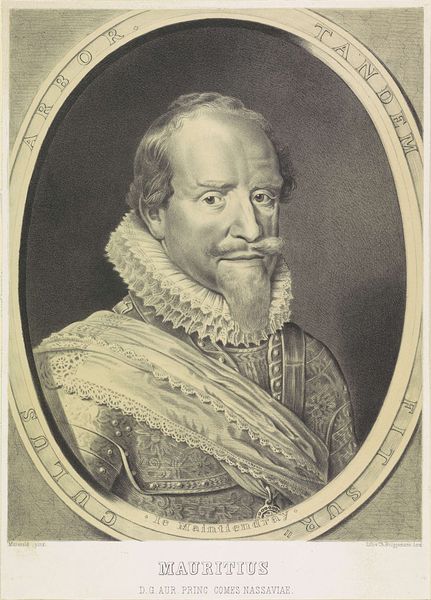
print, intaglio, engraving
#
portrait
#
baroque
#
dutch-golden-age
# print
#
intaglio
#
old engraving style
#
portrait reference
#
cover design
#
portrait drawing
#
history-painting
#
engraving
Dimensions: height 428 mm, width 304 mm
Copyright: Rijks Museum: Open Domain
This portrait of Maurits, Prince of Orange, was made around 1630 and shows the prince encircled by an inscription that reads, "Arbor Tandem." The phrase, meaning "at last a tree," sprouts from the depiction of Maurits, alluding to the flourishing of the House of Orange. Here, we see the symbol of a family tree, deeply rooted in the past, coming into full bloom. This idea—the family tree—can be traced back to ancient genealogical claims, meant to legitimize power through ancestral connections. Consider, for instance, the Tree of Jesse in medieval Christian art, which visualizes the lineage of Christ. In both cases, the tree acts as a potent symbol, connecting individuals to a broader historical and spiritual narrative. The psychological weight of such symbols lies in their capacity to evoke collective memory. By linking Maurits to a lineage, the portrait taps into a deep-seated human desire for belonging and continuity. It is a powerful statement, promising stability and reinforcing the symbolic importance of dynastic succession.
Comments
No comments
Be the first to comment and join the conversation on the ultimate creative platform.
